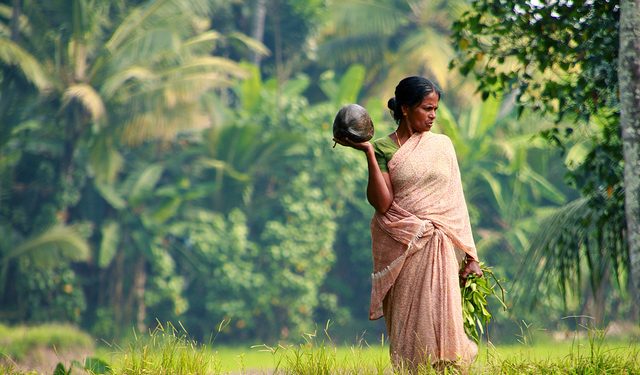The Life of a Woman in India, as Determined by the Patriarchy

Introduction
There is no denying the fact that this is the era of powerful women. Some of the greatest leaders and change-makers in the world are women. Women have more rights and opportunities than ever before.
However, crimes against women are also at an all-time high. In 2013 itself, the National Crime Records Bureau’s annual publication reported over 3,09,546 crimes against women in India filed under various acts such as rape, kidnapping and abduction, dowry death, etc.
Additionally, an estimated 1.4 million girls who are never born every year, largely due to sex selection in China and India. In India, the state of Haryana reports the sex ratio in certain areas being as low as 250 girls per 1000 boys. Female foeticide is rampant in the state as people consider girls to be a financial burden.
Childhood and Adolescence
Literacy rates among women remain dismal. While India has achieved high rates of primary school enrollment, the nation has trouble keeping vulnerable groups, especially girls, in school to complete their education. Some of the reasons why dropout rates are so high among females include the patriarchal mindset and the expectation that even after pursuing higher education, a woman’s place is ultimately as the caretaker of the household; her identity is simply that of a mother, wife or daughter-in-law. Thus educating girls has come to be seen as a waste of time and money.
There are also other factors such as concern for safety; girls often have to travel long distances to and from school which leaves them vulnerable to sexual assaults or as prey of dangerous animals, if the path lies in a forest.
There is still a significant number of girls being married off in rural areas when they are still adolescents. Lack of access to education, health facilities and information is a major problem. As menstruation still remains a taboo in India, information about reproductive health is not made available to adolescents who need it and adolescent girls often drop out of school as lack of availability of feminine hygiene products deters them from going to school.
Adulthood
Dowry still plagues the bride’s side of the family in many parts of India. Yet again, the girl child is seen as a huge drain on the financial resources of the family. To add to this, marital rape is not yet outlawed in India, which means a woman cannot even seek justice for being a victim of domestic violence.
Inheritance laws are also discriminatory and ancestral property is passed down from father to son, leaving women completely out of the equation.
Even in the workplace, women are victims of discrimination in the form of the wage gap (being paid less than their male counterparts for the same job), micro-agressions, derogatory slurs and even sexual harassment.
The gender gap is prominent in various fields especially STEM, as stereotypes, cultural barriers and lack of access to education bar women from contributing to these sectors.
Old Age
Widows in certain parts of India are often ostracized by the community as they are considered inauspicious. Widows are considered to be cursed or worthless after the death of their husbands and are even disallowed from celebrating festivals. The widow gets no financial or emotional support from the family and is left to fend for herself.
While the practice of ‘sati’, (the burning of women on the funeral pyre of their husbands) is no longer as prevalent as it used to be, widows are still subjected to injustices. Inheritance rights, remarriage, even a life of dignity – they are all out of a widow’s reach.
Conclusion
It has been shown time and again that gender equality affects even an economy or a society as a whole. Research has shown that educating women has a cascading effect as educational attainment increases across generations among both boys and girls. Increased education among women leads to lower child mortality rates, more prosperous families and an increase in wages. Access to health information such as family planning is a significant step towards reaching important economic goals such as population control.
It is estimated that closing the gap in women’s labor force participation will lead to average GDP gains of 12 percent by 2030, including about 10 percent in the United States, almost 20 percent in Japan and Korea, and more than 22 percent in Italy.
Gender equality is matter concerning human rights, justice, and economic development. It is imperative that the gender gap is closed in order to attain universal prosperity and security.
[Image Attribute: Pepe Pont]




